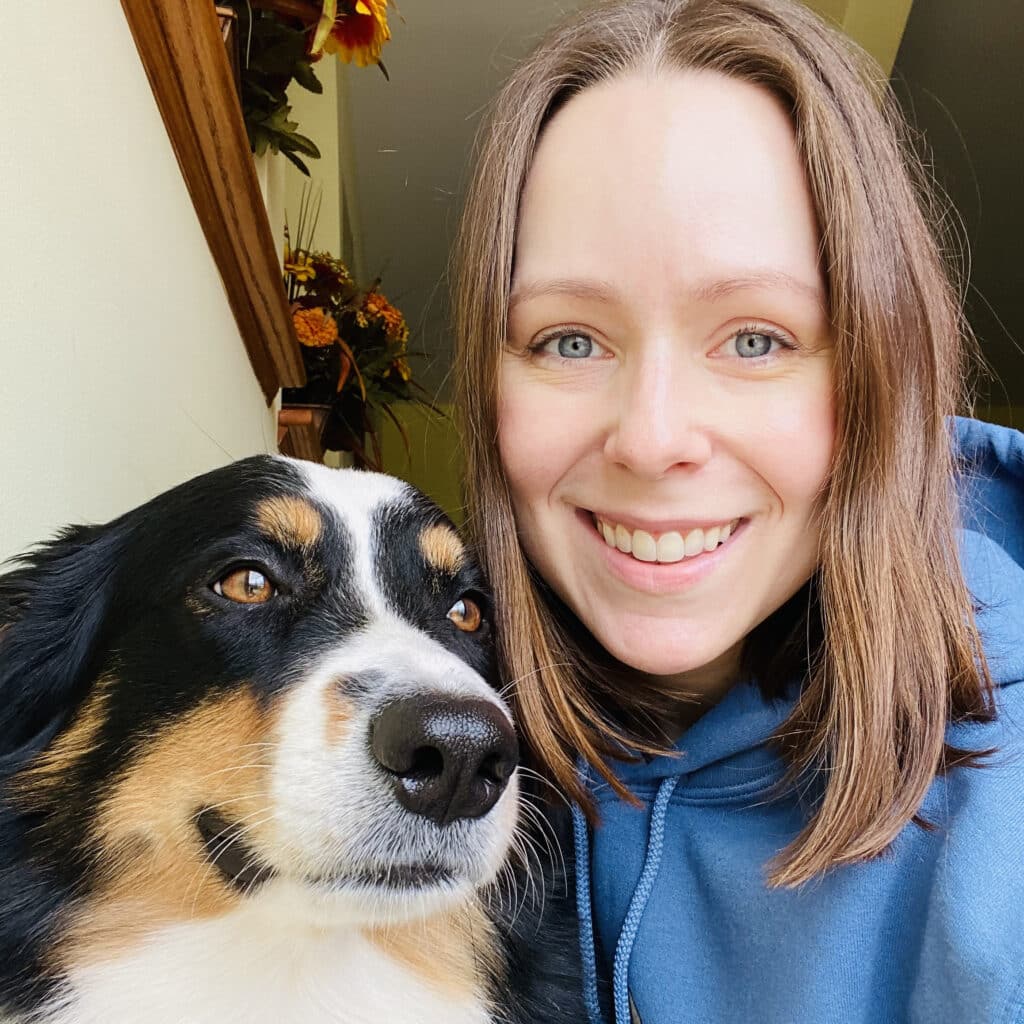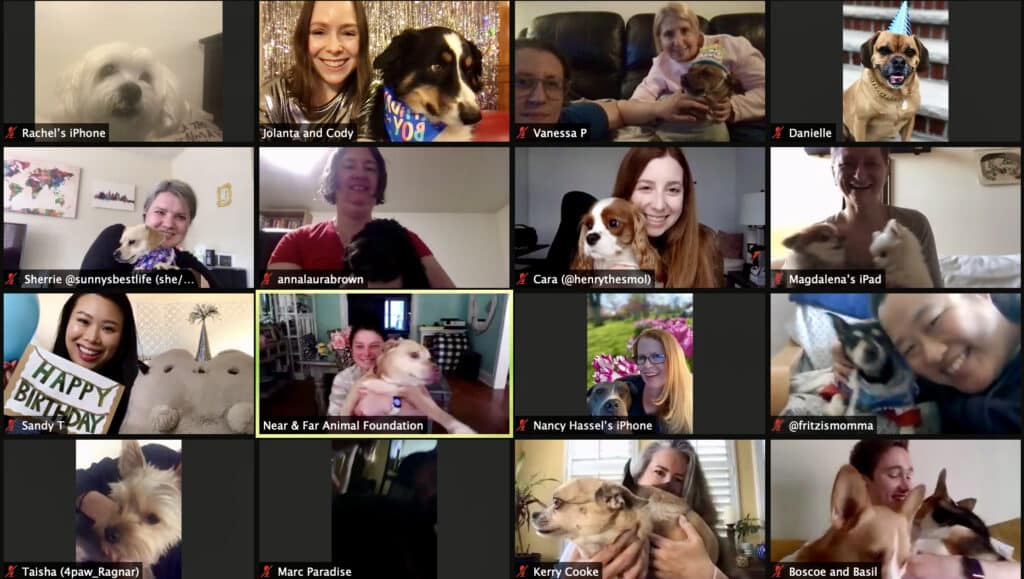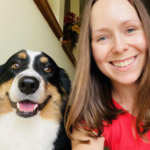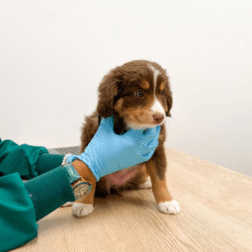When I first started an Instagram account for my dog, Cody, I never imagined that it would become the community it is today. We have a small following of 1.5k followers, but it is full of amazing people and their dogs that I’ve become friends with online and in real life.

It all started out with me sharing Cody’s puppyhood and development, and I quickly met fellow dog parents who had puppies around the same age – our dogs basically grew up together on the internet! I also set out to follow every Australian Shepherd that I could find on Instagram in New York City to make local friends. On top of that, I attended quite a few in-person dog events, one of my favorites being the first-ever Australian Shepherd meet-up at Boris & Horton, where I met some wonderful dog moms and their Aussies!
As Cody got older and I became more focused on his training, I started engaging with dog trainers and dog parents just as passionate as I am about this field. I was also looking for inspiration and advice about traveling and hiking with my dog, so I began interacting with dog moms that were open to exchanging information and resources.
As we all know, everything changed in 2020, and this is when the dog community truly came alive on the internet! Plus, everyone was connecting virtually on Zoom. I missed hosting in-person events, so I started throwing online dog parties! They’re not your typical Zoom calls; rather, my virtual dog events are a fun opportunity for dog-obsessed people to come together to interact, chat about and show off their dogs, and even play games for prizes.

Today, my community comprises of dog parents across all these different interests and then some. Communities come in all sizes across a variety of platforms, whether it’s a few hundred people on Facebook, a thousand followers on Instagram, 10k on TikTok… you get the idea! If you have an interest that you’re passionate about and communicate it regularly, you will draw like-minded people into your community. It’s really that simple, but not so easy to implement, which is why I’ve put together this three-part series on community building to help you!
Community Building | Part 1
How to Mobilize your Platform to give back to the Community
In the first part of the series, we’re focusing on how to mobilize your platform to give back to the community. You can build a community around any interest or niche, but it’s also important to use your platform to make a difference in any way you can. The world may be big, and it may seem challenging for one person to make any sort of impact. But social media is so powerful that it’s imperative we try to use it to support a good cause that, without our efforts, would miss an opportunity to help someone. By giving back, you will be a role model for your community and inspire others to follow your example – creating this effect is the most incredible way that you can make a difference.

For Cody’s 3rd birthday this year, I decided to throw a huge virtual dog party while raising money for Near and Far Animal Foundation (NAFAF), a nonprofit that saves animals in dire need locally and abroad. I started vetting nonprofits at least 6 weeks in advance because I wanted to partner with an organization interested in collaborating with me. Specifically, I wanted to be able to share information that would raise awareness about topics like saving street dogs in South America, keeping dogs safe from preventable diseases, how far the dollar goes to treat dire medical cases, etc.
It turned out to be a beautiful partnership, as I met with Carla, a NAFAF co-founder, regularly on Zoom to offer my support and skills in anything marketing-related (I run a marketing services agency, JSVirtual) and together we hosted an IGTV Live with NAFAF partners and a Clubhouse room to discuss and share ways others could give back and get involved. Within less than 4 weeks, we had raised $700 (this kind of money is life-changing for dogs in remote and impoverished areas like Peru, Venezuela, and Honduras where NAFAF operates), and on the big day of Cody’s Virtual Birthday Party, 25 dog moms and dog dads attended the live event!
I’ll be honest, I thought I’d only raise $300. That’s right, I underestimated my following! I made my fundraising goal based on numbers without accounting for the heart and soul of my community. The fundraiser was a huge success, but it took a lot of experimenting and time to figure out what worked and what didn’t. I ended up putting together a guide outlining four ways you can fundraise using social media. As you can see, these strategies can be implemented by absolutely anyone with followings of any size (I only have 200 Facebook friends and 1.5k Instagram followers).
When mobilizing your platform to give back to the community, promote a cause that you’re not only passionate about but dedicated to being involved on a higher level. Partner with an organization, if possible so that you can collaborate and learn from each other; these groups are experienced at fundraising and you may have your own skills that you can contribute. Choose just a couple of ways of how you want to promote your fundraiser so that you don’t spread yourself too thin; have a look at my guide for ideas to help you get started! Feel free to be creative with your promotion and create a variety of types of content – it doesn’t have to be very different from the content you’re already putting out. Do share your cause with absolutely anyone and everyone you talk to; you’ll be blown away by the support you’ll get! And finally, get excited, because you’re going to make a bigger impact than you ever imagined!
My hope is that this inspires you to mobilize your platform to give back to the community. Next in the series, we’ll be talking about bringing together your audience. Would you like to know how I threw a dog party on Zoom for 25 people? I can’t wait to share my pro tips with you for building your community through virtual events, whether you’re an individual looking to host a birthday party for your dog or a business looking to grow your brand.




